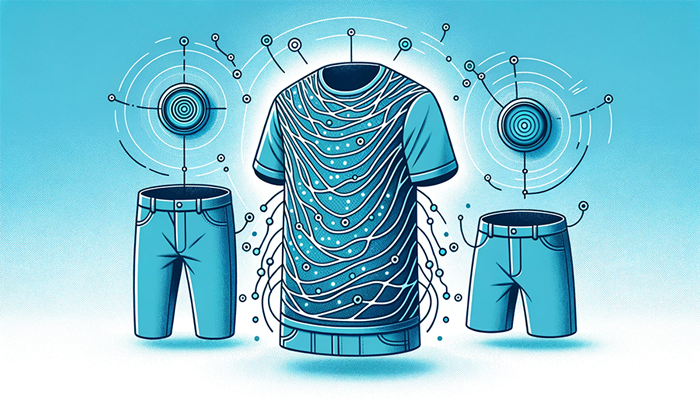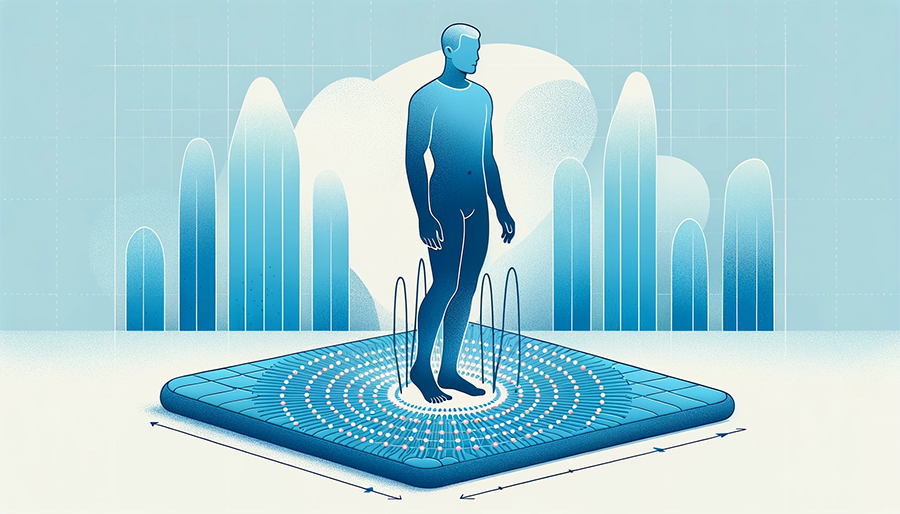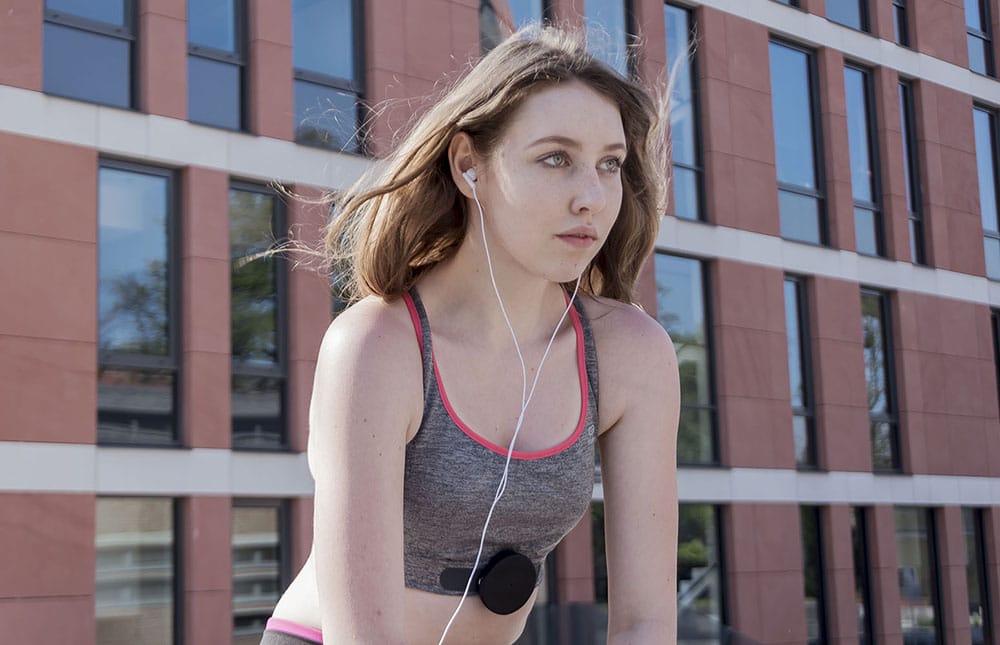Wearable Technologies
Smartwatches and Fitness Trackers
The evolution of wearable devices has transformed how we approach physical activity and sedentary behavior measurement. From basic pedometers to advanced smartwatches, these gadgets have become indispensable in both research and clinical settings. Common features include step count, heart rate monitoring, and sleep tracking, providing valuable insights into an individual’s activity patterns and overall health.
Smartwatches and fitness trackers offer the advantage of convenience and continuous data collection. As a result, researchers can gather valuable longitudinal data, while clinicians can monitor patients’ progress remotely. This, in turn, allows for more effective interventions and tailored recommendations for improving public health. However, these devices also come with limitations, such as accuracy concerns and battery life constraints. To better understand the nuances of physical activity and sedentary behavior, read this comprehensive article on measurement methods and tools.

Textile Sensors
In recent years, the integration of sensors into clothing has emerged as a promising trend in physical activity and sedentary behavior measurement. Textile sensors can detect various parameters, such as strain, pressure, and temperature, providing a wealth of information on an individual’s activity levels and physiological responses.
One of the key advantages of textile sensors is their comfort and unobtrusiveness. Unlike traditional wearable devices that can be bulky or restrictive, these sensors are seamlessly integrated into garments, allowing users to move freely without discomfort. This makes them particularly suitable for special populations, such as older adults and children and adolescents, who may be more sensitive to discomfort or less likely to tolerate conventional measurement tools.

Wireless Sensor Networks
Wireless sensor networks (WSNs) consist of spatially distributed autonomous sensors that cooperatively monitor physical or environmental conditions. In the context of physical activity and sedentary behavior measurement, WSNs can be used to track movement, posture, and vital signs, providing detailed information on an individual’s activity levels and physiological responses.
WSNs have found applications in various domains, from sports performance analysis to rehabilitation programs. For instance, these networks can be used to monitor athletes’ biomechanics and physiological responses during training or competition, enabling coaches and sports scientists to optimize performance and reduce injury risk. In clinical settings, WSNs can support remote patient monitoring and help healthcare professionals design personalized intervention strategies based on real-time data. For an in-depth exploration of WSN applications, refer to this article on clinical setting activity and sedentary measurements.
However, WSNs also present challenges, such as connectivity issues and data security concerns. Ensuring reliable data transmission and safeguarding sensitive information are critical aspects that need to be addressed for the widespread adoption of WSNs in physical activity and sedentary behavior measurement.
In conclusion, wearable technologies, including smartwatches, fitness trackers, textile sensors, and wireless sensor networks, have revolutionized how we measure physical activity and sedentary behavior. These emerging technologies offer unique advantages, such as convenience, comfort, and continuous data collection, enabling researchers and clinicians to better understand and promote healthier lifestyles. However, they also come with limitations and challenges that must be considered when selecting the most suitable measurement tool for a specific application. To learn more about choosing the right measurement method for your research or clinical needs, check out this article on selecting the best approach.
As researchers and clinicians continue to explore and adopt wearable technologies, interdisciplinary collaboration and innovation will play a crucial role in addressing existing limitations and enhancing the potential of these devices. By staying informed about the latest advancements in wearable technologies, we can contribute to the development of more effective strategies for promoting physical activity, reducing sedentary behavior, and improving public health outcomes.
Understanding the context in which physical activity and sedentary behavior occur is also essential for designing effective interventions. For insights into the diverse activity profiles of individuals, such as the “couch potato,” “weekend warrior,” “ants,” and “koalas,” read this informative article on activity profiles.
In the future, emerging technologies like virtual coaching and augmented reality may further revolutionize the way we measure and promote physical activity and sedentary behavior. To stay ahead of the curve and explore how these technologies can enhance your research or clinical practice, consult this article on promoting activity through virtual coaching.
By leveraging wearable technologies and staying up-to-date with the latest trends and advancements, researchers and clinicians can help individuals adopt healthier habits, reduce sedentary behavior, and improve their overall well-being. As we move forward, it is crucial to embrace the potential of these technologies and continue pushing the boundaries of our understanding and approach to physical activity and sedentary behavior measurement.
Environmental Sensors
Infrared Motion Sensors
Infrared motion sensors operate based on the principle of detecting changes in infrared radiation emitted by objects or individuals within their field of view. These sensors have found applications in detecting sedentary behavior by monitoring the presence or absence of movement in a given area.
One of the main advantages of infrared motion sensors is their non-invasive nature. They can monitor movement without directly interacting with the individual or causing discomfort. Additionally, these sensors are relatively low-cost, making them accessible for various research and clinical settings.

However, infrared motion sensors have some limitations, including sensitivity to environmental factors like temperature changes and sunlight, which can affect their accuracy. For more information on other methods to measure physical activity and sedentary behavior, consider reading this article on measurement methods and tools.
Pressure-sensitive Mats
Pressure-sensitive mats consist of a grid of pressure-sensitive elements that detect changes in pressure caused by a person’s movement or weight. These mats can be used to assess physical activity and sedentary behaviour by tracking the time spent in various postures, such as sitting, standing, or lying down.
The benefits of pressure-sensitive mats include their accuracy and versatility. They can be used in various settings, from the workplace to the home, providing detailed information on an individual’s activity levels and posture changes. This data can help researchers and clinicians better understand the links between sedentary time, physical activity, and health outcomes.
However, pressure-sensitive mats also have some drawbacks. Their obtrusive nature can make them less suitable for certain populations or environments, and their limited coverage may not capture the full range of an individual’s movements. For insights into the challenges and considerations when measuring physical activity and sedentary behavior in specific populations, refer to these articles on special populations, older adults, and children and adolescents.

In conclusion, environmental sensors such as infrared motion sensors and pressure-sensitive mats offer unique advantages for measuring physical activity and sedentary behavior. They can provide valuable data on an individual’s movement patterns and postures, contributing to a better understanding of the relationship between sedentary time, physical activity, and health outcomes.
However, researchers and clinicians must also consider the limitations and challenges associated with these environmental sensors, such as sensitivity to external factors and obtrusiveness. To make an informed decision about the most suitable measurement tools for your research or clinical practice, consult this article on choosing the right measurement method.
By incorporating environmental sensors into their toolkit, researchers and clinicians can expand their understanding of physical activity and sedentary behavior, allowing them to design more effective interventions and promote healthier lifestyles. As we continue to explore the potential of these technologies, it is crucial to stay informed about the latest advancements and consider the broader context in which physical activity and sedentary behavior occur. To learn more about the importance of measuring context in physical activity and sedentary behavior research, check out this article on contextual factors.
Machine Learning and Artificial Intelligence
Algorithms for Activity Recognition
Machine learning algorithms play a critical role in the analysis of physical activity and sedentary behavior data. They can identify and classify different types of activities based on patterns found in the raw sensor data. There are various types of machine learning algorithms, including supervised, unsupervised, and reinforcement learning, each with its unique strengths and weaknesses.
In activity recognition, the process typically involves feature extraction and classification. Feature extraction transforms raw data into meaningful features that can be used to differentiate between activities, while classification assigns the identified features to specific activity categories. This article on accelerometer-based measurement provides an example of how machine learning can be applied in measuring physical activity and sedentary behavior.

However, there are challenges in using machine learning algorithms for activity recognition, such as data quality and model generalization. Ensuring high-quality data is crucial for accurate activity recognition, while developing models that can generalize well to different individuals and contexts remains a significant challenge.
AI-driven Personalized Recommendations
Artificial intelligence (AI) has the potential to revolutionize how we approach physical activity and sedentary behavior interventions. By leveraging AI-driven personalized recommendations, researchers and clinicians can provide tailored feedback and guidance to individuals, helping them adopt healthier habits and reduce sedentary time.
Examples of AI-driven interventions include activity reminders and exercise coaching. For instance, AI-powered virtual coaches can analyze individual patterns and preferences to suggest personalized exercise routines or prompt individuals to take breaks from screen time. Read more about the role of virtual coaching in promoting activity in this article on virtual coaching.
Personalized AI interventions offer several benefits, such as tailored feedback that can lead to increased engagement and motivation. They can be particularly useful for children and adolescents, who often require targeted support to balance sedentary behaviour and physical activity. For more information on this topic, refer to this article on activity and sedentary measurements in children and adolescents.
However, AI-driven personalized interventions also present potential drawbacks. Privacy concerns may arise due to the collection and analysis of personal data. Additionally, over-reliance on AI-driven interventions might reduce the human element in behavior change, potentially limiting their effectiveness in some cases.
In conclusion, machine learning and artificial intelligence hold great promise for improving our understanding of physical activity and sedentary behavior, as well as designing effective interventions. By harnessing the power of these technologies, researchers and clinicians can develop more accurate activity recognition algorithms and deliver personalized recommendations that promote healthier lifestyles.
To fully realize the potential of AI and machine learning, it is crucial to address the challenges associated with data quality, model generalization, and ethical considerations. By doing so, we can ensure that these technologies continue to advance our knowledge and contribute to the improvement of public health. For more information on emerging technologies in the field of physical activity and sedentary behavior measurement, explore this article on emerging technologies.
Virtual and Augmented Reality
Virtual Reality for Physical Activity Assessment
Virtual Reality (VR) is a powerful tool that allows researchers and clinicians to create immersive, simulated environments for assessing physical activity. By replicating real-world scenarios, VR can be applied in various contexts, such as sports performance and rehabilitation.
Using VR offers several advantages, such as controlled conditions and immersive experiences that can motivate individuals to engage in physical activity. This can be particularly beneficial when assessing activities that require complex movements or coordination. For example, an activity questionnaire might not fully capture the nuances of a specific sport, but a VR environment can provide a more accurate assessment.
However, there are limitations to using VR for physical activity assessment. High equipment costs can be a barrier for widespread adoption, and some users may experience motion sickness or discomfort during the VR experience. Despite these challenges, VR holds great potential for advancing our understanding of physical activity in various contexts. Read more about the importance of measuring sedentary behavior and activity in this article.
Augmented Reality for Sedentary Behavior Modification
Augmented Reality (AR) is an emerging technology that integrates digital information into the real world, providing new opportunities for modifying sedentary behavior. By adding interactive elements to users’ surroundings, AR can encourage individuals to increase physical activity and reduce time spent in sedentary behavior.
Examples of AR applications include gamification and interactive prompts, which can make physical activity more enjoyable and engaging. Gamification involves incorporating game elements into daily activities, such as achieving virtual rewards for reaching specific activity levels or completing challenges. Interactive prompts can provide real-time feedback and reminders to help users stay physically active throughout the day. Discover more about the role of virtual coaching in promoting activity in this article on virtual coaching.

AR offers several benefits for sedentary behavior modification, such as increased motivation, real-time feedback, and the ability to adapt to individual preferences. However, there are challenges to overcome, including user acceptance and technological barriers. Ensuring that AR applications are user-friendly, accessible, and compatible with various devices will be crucial for widespread adoption.
In conclusion, both virtual and augmented reality technologies hold significant potential for improving the assessment and modification of physical activity and sedentary behavior. By leveraging the immersive nature of VR and the interactive capabilities of AR, researchers and clinicians can develop innovative strategies to promote healthier lifestyles and improve public health outcomes.
To maximize the potential of VR and AR, it is essential to address the challenges associated with equipment cost, user acceptance, and technological barriers. By doing so, these technologies can continue to advance our understanding of physical activity and sedentary behavior, as well as contribute to the development of effective interventions. For more information on emerging technologies in the field of physical activity and sedentary behavior measurement, explore this article on emerging technologies.
Comparison of Measurement Technologies in Physical Activity and Sedentary Behaviour Measurements
When it comes to measuring physical activity and sedentary behavior, researchers and clinicians have a variety of tools at their disposal. To make informed decisions about which measurement technology to use, it’s crucial to understand the advantages and limitations of each. In this article, we’ll compare several popular measurement technologies, focusing on their applications, accuracy, and ease of use.
Self-Reported Questionnaires
- Applications: leisure time activities, physical education, general population
- Advantages: low cost, easy to administer, large sample sizes
- Limitations: recall bias, social desirability bias, subjective interpretations
Self-reported questionnaires are a cost-effective and straightforward method for assessing physical activity levels and sedentary behavior. However, they are subject to recall bias and may not accurately capture all types of activities, particularly for sedentary behavior in children.

Accelerometers
- Applications: objective measurement of physical activity, sedentary behavior, and sleep patterns
- Advantages: accurate, objective data, continuous monitoring
- Limitations: cost, potential discomfort, limited contextual information
Accelerometers provide objective, accurate data on physical activity and sedentary behavior, making them a popular choice for researchers and clinicians. They offer continuous monitoring and can capture data in various settings. However, they can be costly and may not provide sufficient contextual information. Read more about accelerometers here.

Pedometers
- Applications: step counting, promoting physical activity
- Advantages: low cost, easy to use, motivating
- Limitations: limited data, potential for overestimating activity
Pedometers are simple devices that count steps and can be used to promote physical activity. They are affordable and user-friendly, making them suitable for large-scale interventions. However, they only provide limited data and may overestimate activity levels.
Heart Rate Monitors
- Applications: measuring exercise intensity, endurance training
- Advantages: continuous monitoring, real-time feedback
- Limitations: potential inaccuracies, affected by external factors
Heart rate monitors measure exercise intensity and can be used in endurance training or other activities that require continuous monitoring. They provide real-time feedback but may be affected by external factors, such as stress, caffeine, or medication, leading to potential inaccuracies.


When selecting the appropriate measurement technology, it’s essential to consider factors such as the target population, research goals, and available resources. For example, self-reported questionnaires may be sufficient for assessing general trends in physical activity, but accelerometers might be necessary for more in-depth investigations.
Furthermore, as technology evolves, researchers and clinicians should stay up-to-date on emerging tools and techniques for measuring physical activity and sedentary behavior. For instance, virtual and augmented reality offer exciting possibilities for assessment and intervention, as discussed in this article on emerging technologies.
In conclusion, choosing the right measurement technology is crucial for accurately assessing physical activity and sedentary behavior in various populations. It’s essential to weigh the advantages and limitations of each method and consider the specific context and goals of the research or intervention.
For example, in a clinical setting, accelerometers may be preferred for their accuracy and ability to capture continuous data. This article on clinical setting measurements provides further insights.
In future research, it’s crucial to explore the integration of multiple measurement technologies to overcome individual limitations and provide a more comprehensive understanding of physical activity and sedentary behavior patterns. For instance, combining accelerometers with self-reported questionnaires could help capture both objective data and contextual information about the activities.
Moreover, as wearable technology becomes more advanced and accessible, researchers and clinicians should consider the potential of these devices in measuring and promoting physical activity. Smartwatches and fitness trackers often include accelerometers, heart rate monitors, and other sensors that can provide valuable data on activity levels, exercise intensity, and even sleep patterns.
Finally, as we move towards more personalized interventions, it’s essential to recognize that one size does not fit all. Different measurement technologies may be more suitable for specific populations, such as older adults, children and adolescents, or individuals with disabilities. For more information on measuring activity and sedentary behavior in specific populations, refer to this article on special populations.
In summary, selecting the appropriate measurement technology is a critical step in understanding and promoting physical activity and reducing sedentary behavior. By carefully considering the advantages and limitations of each method and staying informed about emerging technologies, researchers and clinicians can make informed decisions and contribute to the development of more effective interventions for various populations.
Conclusion
In this article, we have explored various emerging technologies in the field of physical activity and sedentary behavior measurement. We discussed wearable devices, such as accelerometers, and their application in both research and clinical settings. We also delved into virtual and augmented reality applications, which have the potential to transform how we assess and intervene in physical inactivity and sedentary behavior.
The importance of interdisciplinary collaboration and innovation cannot be overstated. As technology continues to advance, so too must our understanding of the complex relationship between physical activity and health. By working together, researchers, clinicians, and technology developers can create more effective tools for the measurement of physical activity and the promotion of active lifestyles.
In the future, we can expect to see further advancements in the field, such as the integration of multiple technologies to provide a more comprehensive understanding of physical activity and sedentary behavior. Additionally, the development of personalized interventions tailored to individual needs and preferences will become increasingly important, as one size does not fit all when it comes to promoting physical activity.
However, challenges remain in the adoption of these technologies. Ensuring user acceptance, overcoming technological barriers, and addressing concerns related to privacy and data security are just a few of the obstacles that must be overcome. Moreover, the issue of leisure-time sedentary behavior is still prevalent and requires innovative solutions to combat its negative health effects.
As researchers and clinicians, it is essential to stay informed about emerging technologies and methodologies for the assessment of physical activity and sedentary behavior. By exploring and adopting these technologies, we can enhance our understanding of the factors influencing activity levels, provide more accurate measurements, and develop more effective interventions.
As you continue to study and work in this field, we encourage you to:
- Stay informed about the latest advancements in physical activity measurement technology, such as wearables and virtual reality.
- Consider the context in which physical activity and sedentary behavior occur, as well as the specific needs and preferences of the target population.
- Seek interdisciplinary collaboration to develop innovative solutions for the assessment and promotion of physical activity.
- Explore the potential of emerging technologies like virtual and augmented reality for both assessment and intervention purposes.
To learn more about the various methods and tools available for measuring physical activity and sedentary behavior, we recommend reading this article on measurement methods.
In conclusion, the field of physical activity and sedentary behavior measurement is rapidly evolving. By embracing emerging technologies, fostering interdisciplinary collaboration, and addressing the challenges that lie ahead, we can contribute to the development of more effective interventions and promote healthier, more active lifestyles for all.
















